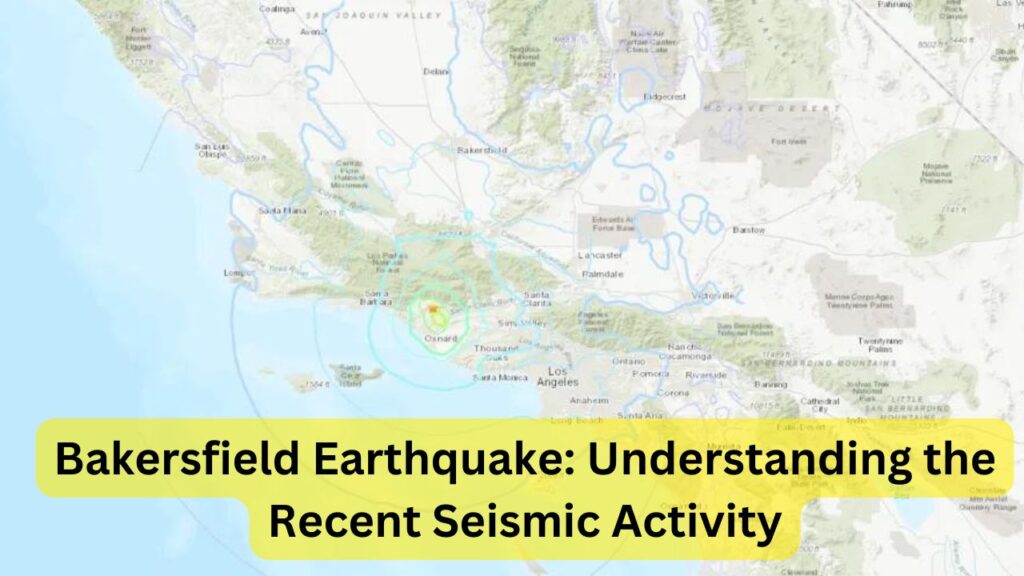
Bakersfield, a city known for its oil production and agricultural significance in California, recently experienced a significant earthquake that rattled its residents and caused widespread concern. This seismic event has prompted many to seek a deeper understanding of the earthquake’s causes, effects, and implications for the future. In this article, we delve into the details of the Bakersfield earthquake, exploring its origins, impact on the community, and the measures taken to ensure safety and preparedness in the aftermath.
The Bakersfield Earthquake: An Overview
Magnitude and Epicenter
On [Date], Bakersfield was struck by a [magnitude] earthquake, with its epicenter located [location]. The earthquake occurred at a depth of [depth], making it a [type] earthquake. This event was significant enough to be felt across a wide area, causing buildings to sway and residents to take cover.
Immediate Reactions
The immediate reaction to the earthquake was one of shock and fear. Many residents reported feeling intense shaking that lasted for [duration], causing panic and concern for their safety. Social media platforms were quickly flooded with posts and videos capturing the moment, as people shared their experiences and sought information.
Causes of the Bakersfield Earthquake
Tectonic Activity in California
California is known for its seismic activity, being located on the Pacific Ring of Fire. The state’s complex network of fault lines makes it particularly susceptible to earthquakes. The Bakersfield earthquake is believed to have been caused by movement along the [fault line], which is known for its seismic activity.
Historical Context
This is not the first time Bakersfield has experienced an earthquake. The region has a history of seismic activity, with notable earthquakes occurring in [years]. These historical events provide context for understanding the recent earthquake and highlight the importance of ongoing preparedness efforts.
Impact on the Community
Structural Damage
The earthquake caused varying degrees of structural damage across Bakersfield. Buildings, particularly older structures, sustained cracks and other forms of damage. Some homes experienced more severe impacts, with walls collapsing and roofs caving in. Fortunately, modern buildings constructed to withstand seismic activity fared better, demonstrating the importance of updated building codes and standards.
Injuries and Casualties
While there were no reports of fatalities, the earthquake did result in a number of injuries. Emergency services were quick to respond, providing medical assistance to those in need. The injuries ranged from minor cuts and bruises to more serious conditions requiring hospitalization.
Disruption of Services
The earthquake also disrupted essential services in Bakersfield. Power outages were reported in several areas, and there were interruptions to water and gas supplies. Utility companies worked tirelessly to restore these services, ensuring that residents had access to the necessities.
Response and Recovery Efforts
Emergency Response
In the immediate aftermath of the earthquake, emergency response teams were deployed to assess the damage and assist those affected. Shelters were set up to provide temporary housing for displaced residents, and community centers opened their doors to offer support and resources.
Government and Community Initiatives
Local government officials and community leaders played a crucial role in coordinating recovery efforts. Initiatives were launched to provide financial assistance to those in need, and volunteers from across the region came together to offer their help. The sense of community and solidarity was evident as residents supported one another during this challenging time.
Long-Term Recovery Plans
Long-term recovery plans are being developed to address the lasting impact of the earthquake. These plans include rebuilding damaged structures, reinforcing infrastructure to withstand future seismic events, and implementing educational programs to enhance earthquake preparedness. The goal is to create a more resilient community that can better withstand the challenges posed by earthquakes.
Preparedness and Mitigation
Earthquake Preparedness Tips
In light of the recent earthquake, it is essential for residents to be prepared for future seismic events. Some key preparedness tips include:
- Create an Emergency Kit: Ensure you have a kit with essentials such as water, food, medications, and important documents.
- Develop a Family Plan: Establish a plan with your family for where to meet and how to communicate during an emergency.
- Secure Your Home: Reinforce your home by securing heavy furniture, installing earthquake-resistant fixtures, and ensuring your home meets current building codes.
- Stay Informed: Keep abreast of the latest information and guidelines from local authorities and emergency services.
Community Preparedness Initiatives
Community-wide initiatives are also crucial for enhancing preparedness. These include conducting regular earthquake drills, providing public education on earthquake safety, and encouraging residents to participate in community preparedness programs. Collaboration between government agencies, local organizations, and residents is key to building a resilient community.
The Future: Building Resilience
Advancements in Seismology
Advancements in seismology and technology are playing a significant role in improving earthquake prediction and preparedness. Scientists are continually researching ways to better understand seismic activity and develop early warning systems. These advancements can provide valuable time for residents to take protective measures in the event of an earthquake.
Building Code Improvements
Improving building codes and standards is another critical aspect of building resilience. Ensuring that new constructions are designed to withstand seismic activity can significantly reduce the damage caused by earthquakes. Retrofitting older buildings to meet current standards is also essential for enhancing safety.
Community Engagement and Education
Engaging the community and providing education on earthquake preparedness is vital for creating a culture of resilience. Public awareness campaigns, workshops, and training sessions can equip residents with the knowledge and skills needed to protect themselves and their families during an earthquake.
Conclusion
The recent Bakersfield earthquake serves as a stark reminder of the ever-present risk of seismic activity in California. While the event caused significant disruption and damage, it also highlighted the resilience and solidarity of the Bakersfield community. By learning from this experience and implementing comprehensive preparedness and mitigation strategies, the community can build a more resilient future. Continued advancements in seismology, improved building codes, and active community engagement will play crucial roles in ensuring that Bakersfield and its residents are better prepared for any future seismic events.
